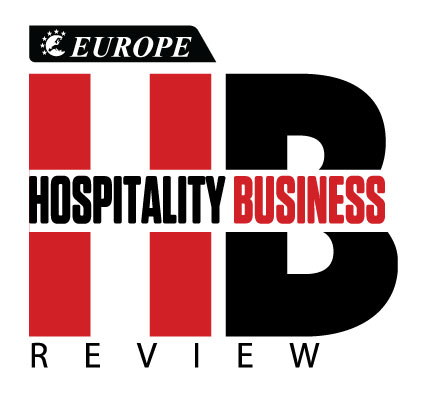Thank you for Subscribing to Hospitality Business Review Weekly Brief
- Home
- Topics
- Automatic Coffee Machines
- Catering and Dining Services
- Hospitality Advisory Services
- Hospitality Construction Services
- Hospitality Consulting Services
- Hospitality Marketing
- Hospitality Procurement
- Hospitality Staffing Services
- Insurance Services
- Travel and Tourism Management
- Vacation Rental Property Management
- Vendor Viewpoint
- News
- CXO Insights
- Conferences
- Newsletter
- Subscribe
- About Us
- CXO Awards
-
Strategic Resort Management as a Brand Differentiator
Modern resorts craft immersive experiences, emphasizing strategic management that aligns brand identity with operations, creating memorable guest journeys through curated activities, intentional design, and operational excellence.

By
Hospitality Business Review | Monday, October 13, 2025
Stay ahead of the industry with exclusive feature stories on the top companies, expert insights and the latest news delivered straight to your inbox. Subscribe today.
Modern resorts have evolved into immersive ecosystems of experience, offering discerning travelers not just luxury but a compelling narrative to become part of. Consequently, the art and science of strategic resort management have evolved from a back-of-house operational function into the primary driver of brand differentiation. It is the invisible architecture behind a resort's identity, a deliberate and holistic approach that transforms physical assets into a living, breathing brand with a distinct personality and an emotional connection to its guests. This strategic orchestration is what separates market leaders from the multitude, creating a powerful competitive advantage that is difficult to replicate. By meticulously curating every facet of the guest journey, from the overarching philosophy down to the smallest operational detail, management can build a brand that is not only recognized but also revered and remembered.
Cultivating Immersive Guest Experiences
The foundation of a differentiated resort brand lies in its ability to deliver an immersive guest experience that transcends the conventional standards of service. Strategic management in this context is akin to being a masterful storyteller, where the resort is the stage, the staff are the cast, and the guest is the protagonist of their own unique adventure. This approach begins long before arrival, with intuitive digital interfaces and personalized communication that builds anticipation and tailors the upcoming stay to individual preferences.
Upon arrival, the strategy shifts to choreographing a seamless and enchanting journey. This is not about a simple checklist of amenities, but about creating signature moments and sensory touchpoints that define the brand. It involves curating a diverse portfolio of activities that speak to the brand’s core identity—be it wellness, adventure, culinary arts, or cultural immersion. A resort focused on tranquility might offer silent, guided nature walks and personalized meditation sessions, while an adventure-oriented brand would facilitate adrenaline-pumping excursions with expert guides. The key is authenticity and relevance. Every experience offered must feel like a natural extension of the brand's promise, meticulously designed and flawlessly executed. This cultivation extends to the F&B program, where menus are crafted not just for taste but to tell a story about the local region, the season, or the resort's own culinary philosophy. Through this lens, strategic management is the art of turning a vacation into a cherished memory, ensuring that every interaction and activity reinforces the brand's unique value proposition.
The Symbiotic Relationship Between Brand Ethos and Operational Excellence
A resort’s brand identity cannot exist solely in marketing materials; it must be ingrained in the very fabric of its operations. Strategic management ensures there is a symbiotic relationship between the brand's ethos and its day-to-day execution. This requires a top-down commitment to translating abstract brand values into tangible, consistent actions and behaviors. The most critical element in this process is the staff. An empowered, well-trained, and motivated team is the most effective vehicle for brand delivery. Strategic management, therefore, places immense emphasis on creating a strong internal culture where every employee, from the general manager to the groundskeeper, understands their role as a brand ambassador. They are not just performing tasks; they are delivering on a promise.
This alignment permeates every operational department. If a brand champions sustainability, its management will implement visible and impactful green initiatives, such as waste reduction programs, renewable energy sources, and sourcing from local, sustainable suppliers. This is not just an ethical choice but a strategic one that reinforces the brand's identity and resonates with a growing segment of conscious consumers. Similarly, a brand built on the pillar of exclusive luxury will ensure its operational standards reflect this, with meticulous attention to detail, a high staff-to-guest ratio, and proactive, anticipatory service that foresees needs before they are even articulated. This operational integrity builds trust and credibility, proving to guests that the brand's promises are not hollow. It is this unwavering consistency, driven by strategic management, that transforms a good resort into a great brand.
Leveraging Ambiance and Design as a Narrative Tool
The physical environment of a resort is its most powerful and immediate form of communication. Strategic management masterfully leverages architecture, interior design, and landscaping as a non-verbal narrative tool to tell the brand's story. The design is not merely about aesthetics; it is about creating a distinct sense of place that evokes a specific emotion and reinforces the brand's market position. Every design choice, from the layout of the property to the texture of the linens, is a deliberate brushstroke in a larger brand portrait.
A resort aiming to be a secluded, romantic haven might utilize organic architecture that blends seamlessly with the natural landscape, private villas with plunge pools, and soft, ambient lighting to create an atmosphere of intimacy and escape. In contrast, a family-focused brand might opt for bright, open spaces, interactive art installations, and thoughtfully designed communal areas that encourage social interaction and fun. The strategic element is ensuring this design language is cohesive and consistent across the entire property. This extends to the sensory experience—a signature scent diffused in the lobby, a curated soundtrack that changes throughout the day, and the feel of locally sourced stone underfoot. These elements work in concert to create a multisensory identity that is deeply memorable.
By treating the resort's physical form as a central character in the brand's narrative, management makes a powerful differentiator that captivates guests from the moment they arrive and leaves a lasting impression long after they depart. This tangible, atmospheric identity becomes an inimitable part of the brand's allure.







